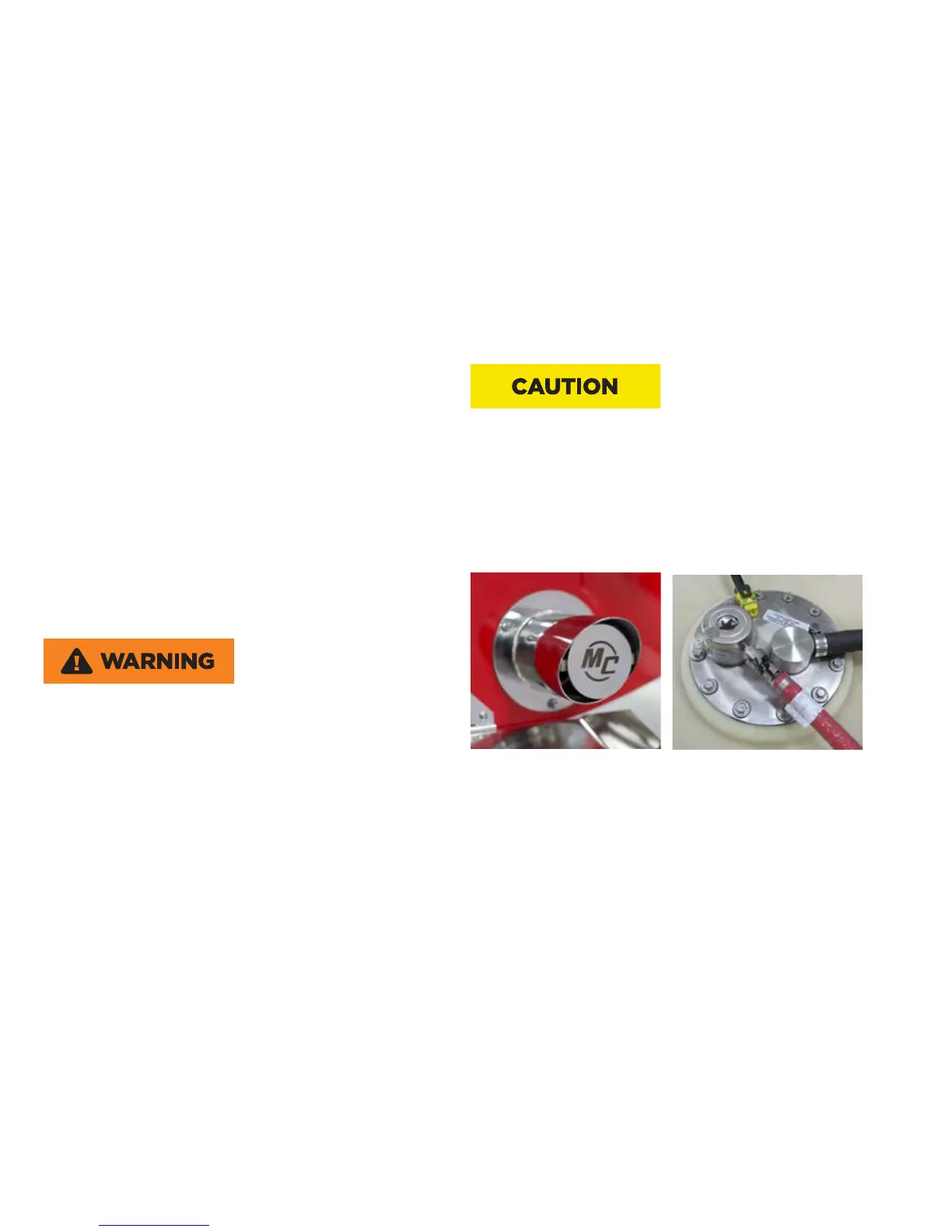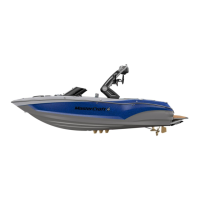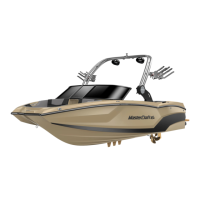Crossing cables or jumper cables may result in damage to the
electrical components due to incorrect battery connections. Such
damages may not be covered by your warranty.
Repeat Check For Fuel And/Or Exhaust Leaks
This function should be performed after about three (3)-to-five (5)
minutes of running the engine to determine whether any leaks are
apparent.
After three (3)-to-five (5) minutes of operation, shut down the
engine and ensure that the engine safety starting switch is discon-
nected. Be certain that the throttle/shift control lever is in neutral.
Again, inspect the fuel system as well as possible. Inspect the fuel
pump gasket, fastener gaskets, regulator seal and sender gasket
for leaks. If the odor of gasoline is strong or if you see visual
Current models are equipped with a low-voltage battery alarm. In
the event that the stereo has been functioning when the boat en-
gine is OFF, the voltage drain on the battery may result in difficulties
restarting the boat. To avoid this situation, when the voltage level
falls to 10.5 volts, the system will shut off the stereo system and
sound an alarm for a period of two (2) minutes to allow the operator
time to turn the ignition key ON and start the engine. Doing so will
allow the engine’s alternator to recharge the battery.
Charge dead batteries with a battery charger before attempting
to start the engine. (Some MasterCraft models offer an optional
battery charger; but never jump-start the battery.) Jump-start-
ing from another boat or battery is dangerous! Charging a dead
battery from an engine will put undue stress on the alternator, which
may cause it to fail.
When charging, batteries generate small amounts of dangerous
hydrogen gas. This gas is highly explosive. Keep all sparks, flames
and smoking well away from the area. Failure to follow instructions
when charging a battery may cause an electrical charge or even an
explosion of the battery, which could cause death or serious injury.
